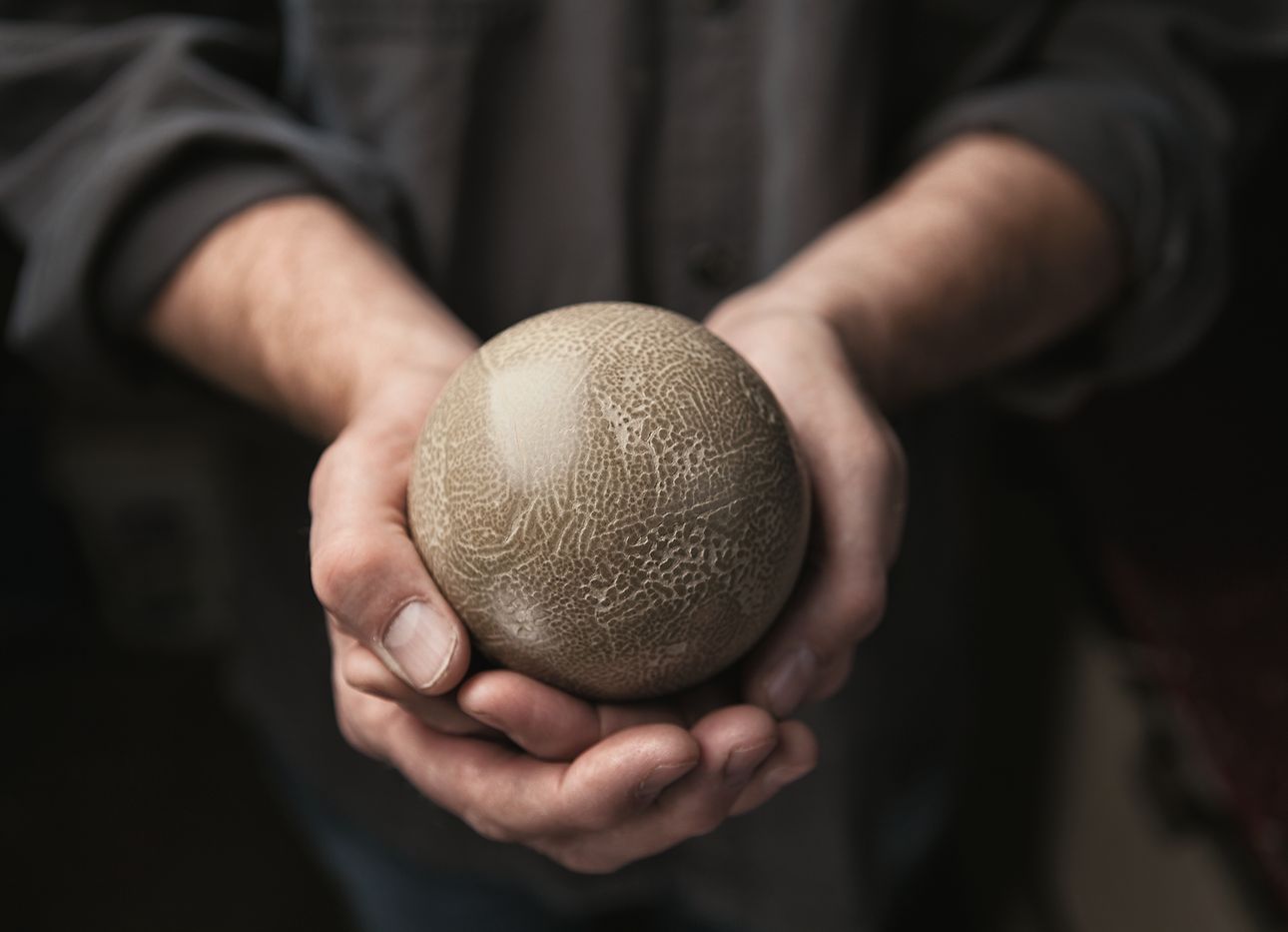
The Joyful Japanese Art of Making Mud Balls
Mudslinging gets a bad rap. But for artist and author Bruce Gardner, an Albuquerque, New Mexico, native, the natural and abundant earthen material is not just a part of the local landscape; it’s his primary palette for a calming, meditative practice called hikaru dorodango—the Japanese craft of making beautiful spheres from, why yes, mud. While it may sound deceivingly simple, Gardner, who first learned of the art form in 2002, after reading an essay by writer William Gibson in Tate Etc. magazine, details the range of the surprisingly complex and challenging practice in his new book, Dorodango: The Japanese Art of Making Mud Balls (Laurence King). “I am struck by how these objects, created from such a humble material, are the near-perfect expression of process refinement. The process itself is art,” Gardner writes, noting that one of the most compelling aspects begins with sourcing, shoveling, and preparing the dirt from the local desert terroir. “The act of creating a dorodango irrevocably completes the transition; dirt is no longer ‘dirty’—it is an art medium.”
Browsing his prodigious collection of dorodango—shelves upon shelves of bocce ball-sized spheres of hardened earth in a range of finishes and colors, from a polished concrete gray to a richly textured, pebbled terra cotta—it’s hard to deny the intrigue and intricacies of such a tactile, solitary activity, each round mass representing an orb of time. As Gardner puts it, dorodango “changes one’s perspective of dirt. Just learning of the art form is enough to bring about the conversation: ‘If this is true, what else have I overlooked?’”